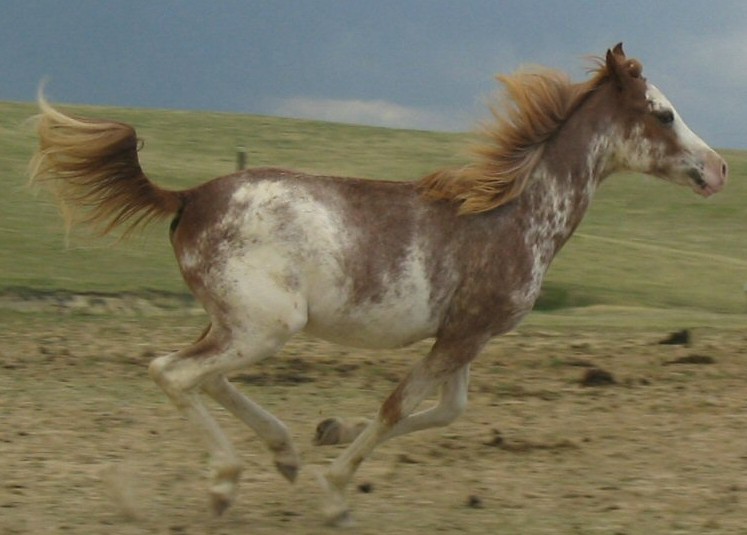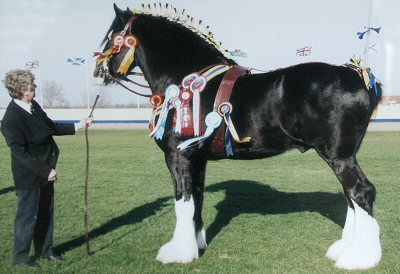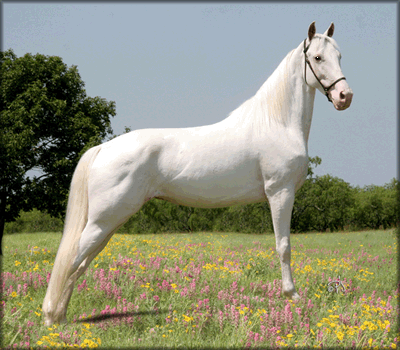sabino horses





Sabino horses have a pattern of white patches accompanied by splashes, spots and ticking. Sabino (pronounced sah-bee-no) can range from very minimal white to sabino white, where white covers almost the entire body. Most sabinos have flecks or roaning, especially those with extensive white. This roaning may not be present at birth, but can develop as a horse matures. White marking on the face is a common characteristic of sabino. This might only be a few white hairs, but sabino horses are well known for often having extensive white markings, from a large blaze to “bonnet”, "apron" or “bald” faces. Sometimes there is white on the sides of the face leaving dark where a blaze might be, giving a “badger face” pattern. There is commonly some white on the chin and/or lower lip. Leg white is also common among sabino horses and may affect all four legs, ranging from coronets to high stockings. There can also be white patches on otherwise colored knees. Most sabino horses have lacy, speckled patches on their bodies with many tiny flecks of color or white near the edges. There are often roaned or speckled spots within larger patches.
Sabino occurs in many breeds including Thoroughbreds, Arabians, Akhal Tekes, Tennessee Walking horses, Spanish Mustangs, Quarter Horses, and Morgans. In fact there are few breeds in which Sabino is absent, Icelandic Horses being one. Some breeds such as the Gelderland are almost exclusively sabinos, having the large facial white, chin-spot and high leg white. Shires and Clydesdales are exclusively sabino, though the markings may be limited to white face and leg markings.
Sabino horse may sometimes be almost entirely white, a phenotype called sabino white. Any color that remains is usually as roaning or speckling on areas such as the ears, tail base, chest and flanks. Sometimes there is no colored hair, but just colored skin showing through white hair. White sabinos occur in Tennessee Walking horses and are getting more common in the American Paint Horse.
Aspen is a beautiful sabino white Tennessee Walking Horse mare, with dark eyes. She's by a Pusher Busting Loose stallion and out of a Dejà Blu - Mack K's Handshaker-bred mare. Aspen is homozygous for the sabino-1 allele. Many thanks to Mary Ellen Areaux of Walkers West, Kaufman, TX for sharing this photo of her lovely mare. Like dominant white the sabino-1 spotting pattern is caused by a mutation in the KIT gene (Brooks and Bailey, 2006). It can therefore be considered allelic with it. Complete linkage was observed between this allele SB1 and the Sabino 1 phenotype in Tennessee Walking Horse families.
Five white horses were tested and shown to be homozygous for the sabino-1 allele, showing that homozygosity for SB1 results in a completely, or nearly completely, white phenotype. It seems likely that some horses thought to be carrying the "Dominant White" gene were, or are, in fact sabino horses showing the extreme form of sabino white. White horses born of non-white parents are probably usually sabino horses with the maximum expression of the pattern. The gene is acting semi-dominant, with homozygotes showing a more extreme phenotype than heterozygotes. It is also noted that sabino is not homozygous lethal, although some, dominant white mutations are.
Another 68 heterozygous horses either showed the sabino phenotype or were multi-patterned, due to the additive effect of other white spotting patterns. Thirteen horses with other sabino-type patterns did not have the sabino-1 mutation, indicating the polygenic and phenotypically variable nature of sabino patterning.
Blue eyes may sometimes occur in sabino horses, but are not considered to be characteristic of the type. Certain lines of horses exhibit blue eyes, such as the Khemosabi line in Arabians, though often only one blue eye is present. Probably blue eyes is linked to sabino in these lines, being caused by a separate gene that is often inherited with the sabino gene.
The genetics of sabino horses involves at least two genes.
|
|









